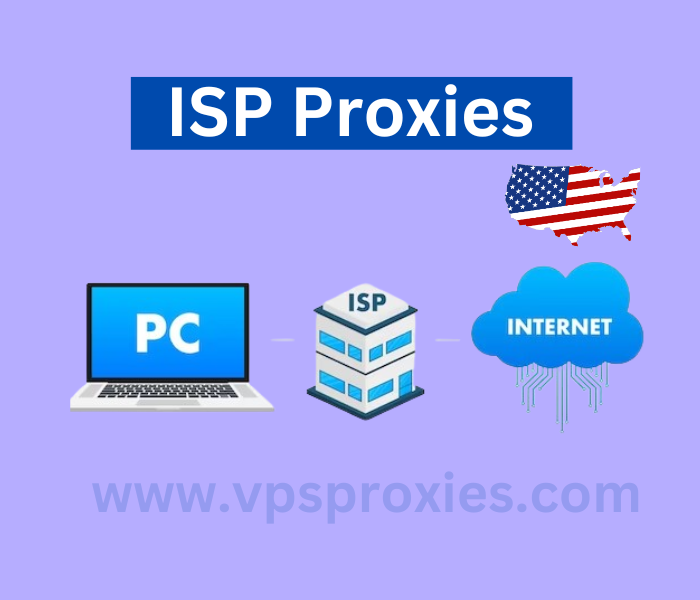Welcome to the digital era, where online security and performance are non-negotiable. In this comprehensive guide, we delve into the realm of IPv6 proxy, exploring how they can elevate your online experience. Whether you’re a seasoned professional or a novice, this blog post will unravel the mysteries surrounding IPv6 proxies, making them more accessible and beneficial for all.
What are IPv6 proxies?
IPv6 proxy refers to intermediary servers that use Internet Protocol version 6 (IPv6) to facilitate communication between a user’s device and the Internet. In the context of networking, the Internet Protocol (IP) serves as the fundamental communication protocol that enables data transfer across networks.
Pros of IPv6 Proxies
Abundant Address Space:
Pro: IPv6 provides an enormous address space, ensuring an almost limitless number of unique IP addresses. This abundance supports the growing number of devices connected to the internet.
Enhanced Security:
Pro: IPv6 proxies offer improved security features, reducing the risk of cyber threats and attacks. The protocol includes built-in encryption and supports IPsec, enhancing data protection.
Better Performance:
Pro: With streamlined routing and more efficient packet processing, IPv6 proxies can contribute to faster and more responsive network performance. This is especially beneficial for bandwidth-intensive applications.
Global Connectivity:
Pro: IPv6 facilitates global connectivity by eliminating the limitations posed by IPv4 address shortages. This enables seamless communication and accessibility across diverse geographical locations.
Future-Proofing:
Pro: As the internet transitions towards IPv6, utilizing an IPv6 proxy ensures your systems are future-proofed. Embracing this protocol now positions your network to adapt to evolving technological standards.
Improved Quality of Service (QoS):
Pro: IPv6 supports advanced Quality of Service features, allowing for better prioritization of data traffic. This results in a smoother and more reliable user experience.
Efficient Network Routing:
Pro: IPv6’s simplified and hierarchical addressing structure leads to more efficient network routing. This efficiency can contribute to reduced latency and improved network performance.
Cons of IPv6 Proxies
Compatibility Challenges:
Not all websites and online services fully support IPv6. This may lead to compatibility issues and the need for workarounds or dual-stack configurations to ensure seamless connectivity.
Transition Complexity:
Transitioning from IPv4 to IPv6 can be complex and may require significant time and resources. The coexistence of both protocols during the transition phase can introduce management challenges.
Limited IPv6-Aware Applications:
Some applications and software may not be optimized for IPv6, potentially leading to reduced functionality or performance when operating in an IPv6 environment.
Potential security risks during the transition:
The transition period from IPv4 to IPv6 can introduce security vulnerabilities. Misconfigurations or incomplete implementations may create opportunities for exploitation.
Learning Curve:
Implementing and managing an IPv6 proxy may require additional training for IT professionals who are more familiar with IPv4. This learning curve could lead to operational challenges.
Increased Network Complexity:
Managing a dual-stack network (supporting both IPv4 and IPv6) can introduce additional complexity. This may necessitate more sophisticated network management tools and practices.
Cost of Implementation:
Implementing IPv6 proxies and ensuring a smooth transition may involve upfront costs for hardware, software, and training. Organizations need to weigh these costs against the long-term benefits.
IPv4 Proxy VS IPv6 Proxy
Step 1: Addressing the Basics
To comprehend the dissimilarities, let’s start by unraveling the basic structure of IPv4 and IPv6. IPv4 relies on 32-bit addresses, which limits the number of unique addresses available, whereas IPv6 boasts a 128-bit address format, providing an astronomically larger pool of unique addresses.
Step 2: The Exhaustion Dilemma
Transitioning smoothly, one of the primary concerns with IPv4 is the impending exhaustion of available addresses. So this limitation has led to the inevitable need for a more expansive address space, and IPv6 emerges as the solution, ensuring an abundance of addresses for future growth.
Step 3: Enhanced Security Features
Segueing into security considerations, the IPv6 proxy offers an inherent advantage. The incorporation of features like IPsec at the protocol level enhances end-to-end encryption, bolstering the security posture compared to IPv4, where such features are often optional.
Step 4: Performance Optimization
Moving forward, let’s explore how IPv6 proxies contribute to performance optimization. The streamlined header structure of IPv6 reduces packet processing overhead, resulting in more efficient data transmission. This efficiency becomes increasingly vital in the era of bandwidth-intensive applications.
Step 5: Compatibility and Coexistence
When transitioning seamlessly, compatibility is a critical factor. IPv4 and IPv6 need to coexist during the transition period. IPv4 proxy may be more prevalent, but the adoption of IPv6 proxies becomes imperative for future-proofing networks and ensuring compatibility with the expanding IPv6 infrastructure.
Step 6: Internet of Things (IoT) Considerations
Traversing through the IoT landscape, IPv6 gains prominence. Moreover, the burgeoning IoT ecosystem demands a vast address space, and IPv6 effortlessly accommodates the multitude of connected devices, positioning itself as the go-to choice for supporting the ever-expanding Internet of Things.
Conclusion:
As we conclude this extensive guide on IPv6 proxies, you’re now equipped with the knowledge to navigate the digital landscape with confidence. Whether you’re focused on enhancing your online security or optimizing your performance, IPv6 proxies are the key to unlocking a seamless and secure online experience.
Embrace the future of online connectivity with IPv6 proxies—your gateway to a faster, safer, and more efficient digital presence.
FAQ:
Answer: IPv6 proxies provide a larger address space, better security features, improved performance, and future scalability compared to IPv4 proxies.
Answer: Follow our step-by-step guide in the blog post for an easy setup and configuration process, including choosing a reliable provider and navigating configuration settings.
Answer: Yes, IPv4 proxies are still supported, but it’s essential to consider the benefits of IPv6, such as enhanced security and future compatibility. Our guide helps you make an informed decision based on your current and future needs.













